
With its range and intensity of planting, Chanticleer—the public garden in Wayne, Pennsylvania, that was once home to pharmaceutical tycoon Adolph Rosengarten Jr.—lives up to its promise of being a “pleasure garden.” The former estate opened to the public in 1993 and quickly earned a reputation as a horticultural Cirque du Soleil. On every visit, I find, besides incredible beauty, ideas at almost every turn. From the lavish container plantings of the teacup and entry gardens to the first peak of the pond garden in May, the place begs you to crib.
Adrian Higgins is the garden editor of The Washington Post and the author of Chanticleer: A Pleasure Garden (University of Pennsylvania Press; 2011).
Left: One of the most effective if extravagant mass plantings at Chanticleer is of camassia in broad ribbons in the stream garden. The native bulb multiplies in the moist soil, and barriers formed by dried fern fronds keep lawn mowers—and feet—away from the camassia before and after blooming in late April.
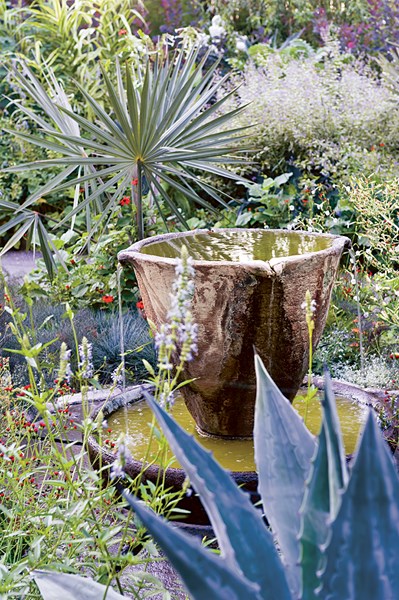
Photo by: Rob Cardillo
Lesson one: Create a place of retreat. Even within its 35-acre expanse, the garden provides intimate nooks: the stucco-walled embrace of the kitchen courtyard, the shady solitude of the little minder woods, and the sun porch, where you can shelter decadently from summer’s heat.
Chanticleer’s gardeners don’t feel the need to lump plants together by type, region, or hardiness and change plant palettes from year to year.
Left: In the teacup garden, a typical planting includes agaves, grasses, and palms.
See more gardens in Pennsylvania.
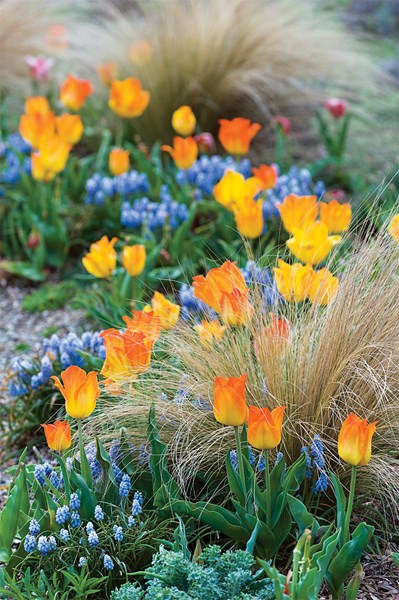
Photo by: Rob Cardillo
Lesson two: Harness the power of massing. The serpentine, a sinuous, double bed of agricultural crops, elevates planting to a kind of land art, as do the extravagant, fleeting ribbons of camassia in the stream garden; an asparagus hedge bordering the cutting garden; and the thousands of daffodils carpeting the orchard floor.
The gravel garden’s spring display pairs Greigii tulip ‘Eastern Surprise’ with Muscari ‘Valerie Finnis.’
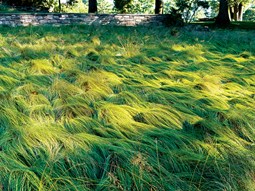
Photo by: Rob Cardillo
The sporobolus hillside is covered in prairie dropseed. Each spring, green tufts of fine grasses arise out of charred mounds, an annual resurrection prompted by the carefully managed controlled burn. By late summer, the entire area will give up the fragrance of cilantro. How easy it would have been to clutter this hill; instead, the hot, dry, sloping site has been used to sublime effect.
Left: Heavy clay soil besets the hillside below the ruin. In selecting a grass to form a meadow, the gardeners chose the handsome native prairie dropseed Sporobolus heterolepis. The grass is burned in late winter, regenerating into dense mounds that remain lush in the hottest weeks of summer. By October, the grasses turn tan-orange in harmony with the perimeter trees.
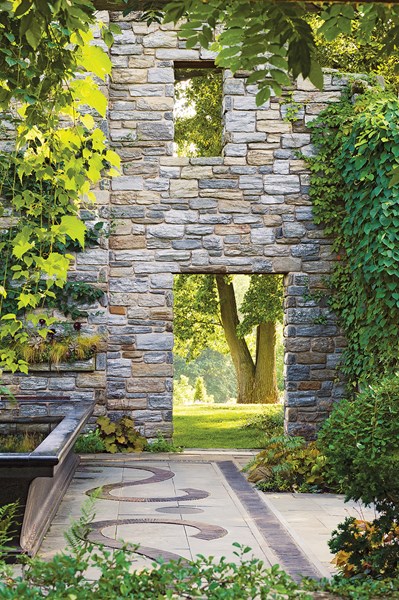
Photo by: Rob Cardillo
Even the parking lot garden shows something: Don’t compromise ornament to reduce maintenance. Massing is used here as a foil for structural plants: a bed of hydrangea ‘Annabelle’ below a zelkova tree, feather reed grass next to staghorn sumacs, and spring displays of Deutzia gracilis ‘Nikko’ and Viburnum x. pragense. Returning to my car after a few hours in the garden, I often stop to marvel at the parking lot beds. Choicely planted with such beauties as the Himalayan pine and Hamilton’s spindle tree, Euonymus hamiltonianus, they are nonetheless a quiet coda, the retreating notes that allow the curtain to come down on one of the best shows in earth.
A simulated ruin, built in 2000, has become an armature for vines and succulents. The ruin’s “doors” and “windows” direct the eye to external views, offering another valuable lesson in garden design: Use structures to embrace whimsy.
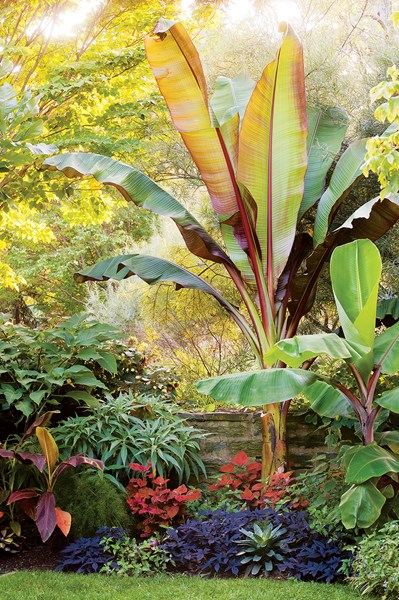
Photo by: Rob Cardillo
Left: The teacup garden champions leafy tropicals. This medley includes the bananas Musa ‘Siam Ruby’ and Ensete ventricosum ‘Maurelii,’ Brugmansia ‘Charles Grimaldi,’ and Echium candicans ‘Select Blue.’ The orange-leaf plant is Solenostemon scutellarioides, and the bromeliad in front of the ensete is Vriesea ospinae var. gruberi.
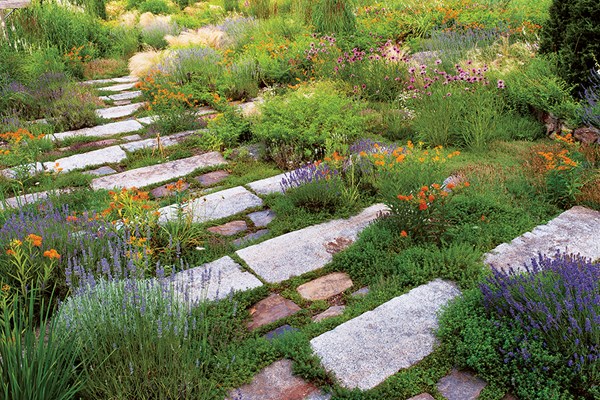
Photo by: Rob Cardillo
The gravel garden provides a model for effective planting of an open and sunny slope. Gardeners added sand and gravel to the native clay and created a journey down and through a sun-loving medley of perennials, grasses, and herbs. In June, varieties of lavender, thyme, and the Mexican feather grass Nassella tenuissima provide plant structure.
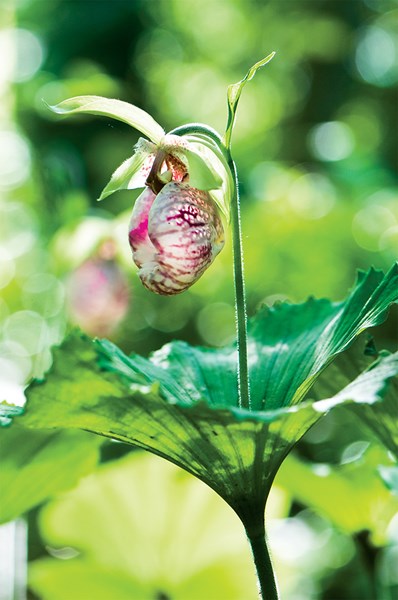
Photo by: Rob Cardillo
Plants at Chanticleer are not labeled, in keeping with the pleasure garden idea, but plant lists are available.
The terrestrial orchid, Cypripedium japonicum, shows off its otherworldly flowers in the Asian woods.
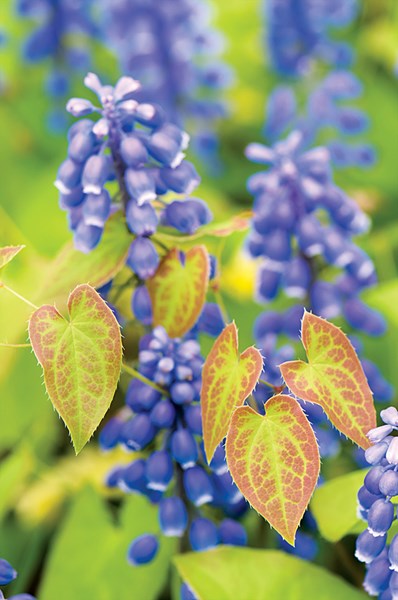
Photo by: Rob Cardillo
Muscari armeniacum blooms alongside the young spring growth of Epimedium x versicolor ‘Sulphureum,’ setting off the latter’s heart-shape bicolor leaves against the muted purple of the grape hyacinths.
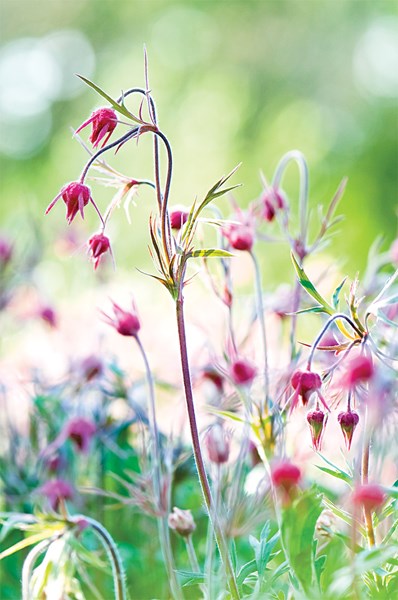
Photo by: Rob Cardillo
Geum triflorum in the pond garden.
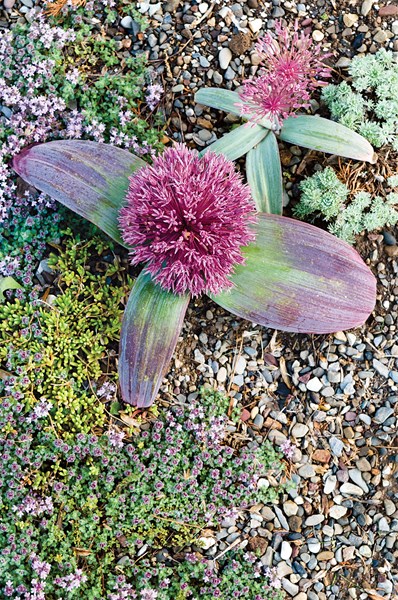
Photo by: Rob Cardillo
The generous bloom of the low-growing ornamental onion, Allium nevskianum, and thyme in the gravel garden.
SOURCE:http://www.gardendesign.com/pictures/lessons-from-chanticleer_262/